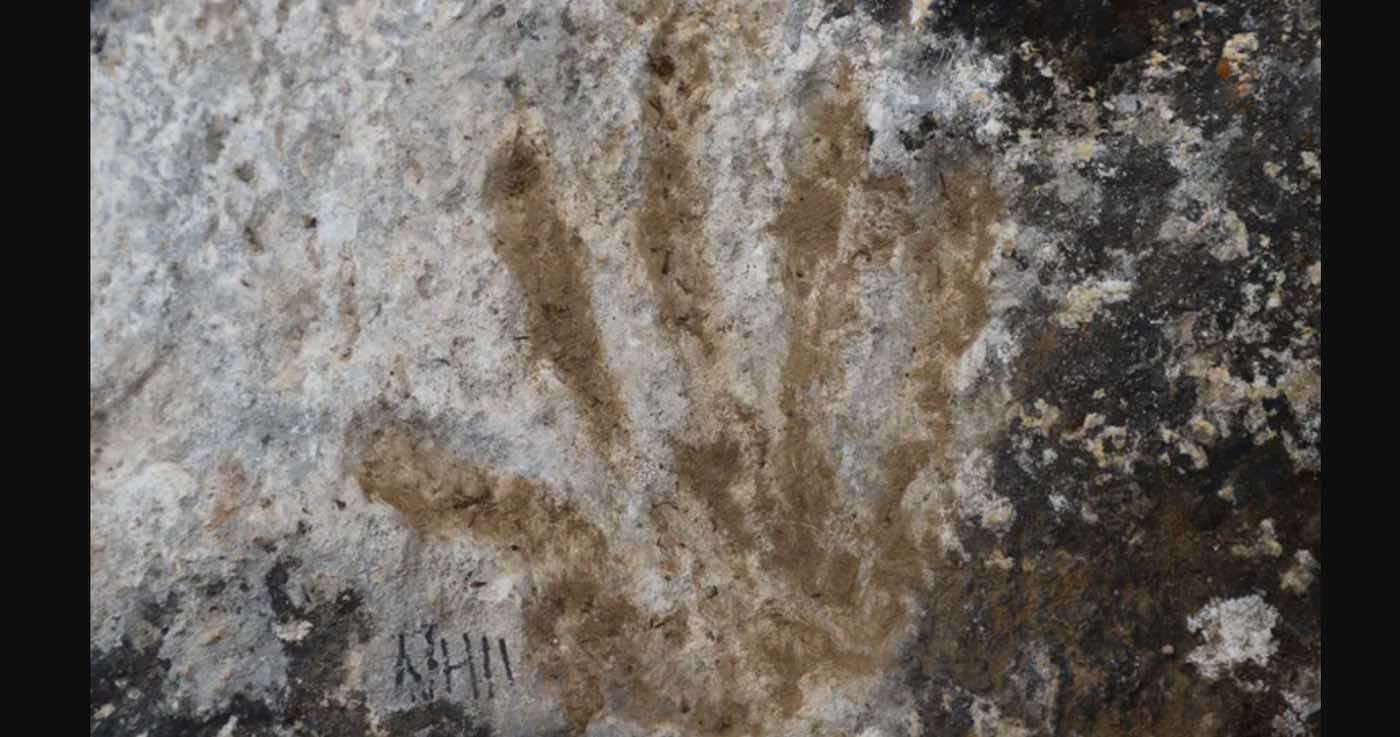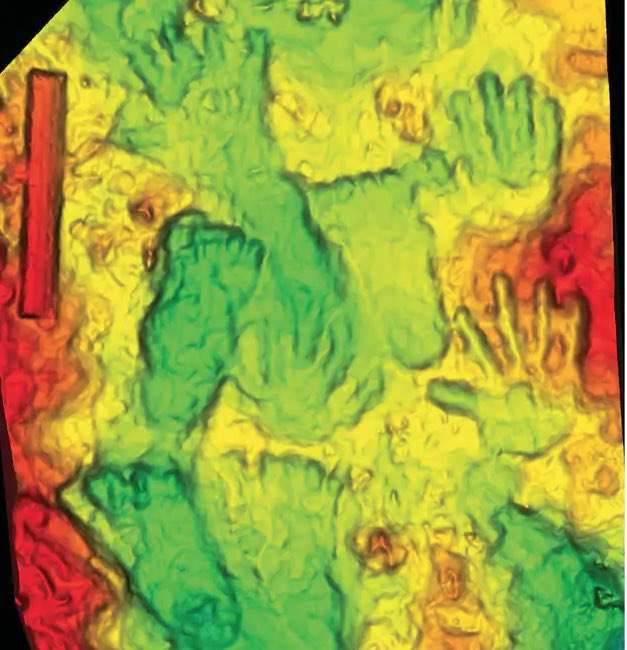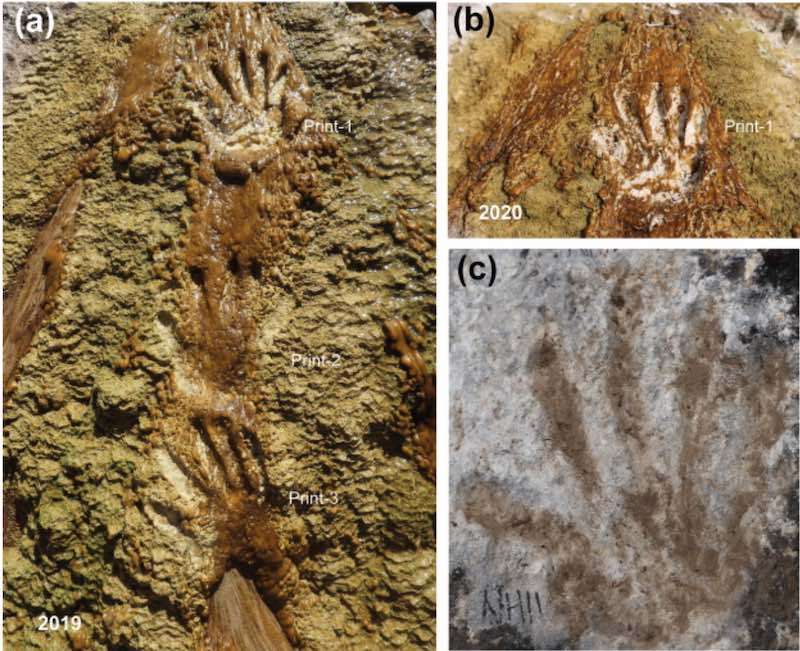Club-Tailed Dinosaur Found in Chile Had Weapon Unlike Anything Seen Before: 'Entirely Unprecedented'
The discovery of an ankylosaur relative with a leaf-shaped tail lined with 7 blades has scientists totally stunned.

Written by Matthew Bennett and Sally Christine Reynolds at Bournemouth University. This article is republished from The Conversation under a Creative Commons license. The research was published in Science Bulletin.
Fossilized footprints, and more rarely, hand prints, can be found around the world; left as people went about their daily business, preserved by freak acts of geological preservation.
In new research our international team have discovered ancient hand and footprints high on the Tibetan plateau made by children.
The team argues that these traces represent the earliest example of parietal art. Parietal art is paintings, drawings, and engravings on rock surfaces-the sort of thing you would find in a cave, although the Tibetan traces are not in a cave.
The limestone on which the traces were imprinted dates to between around 169,000 and 226,000 BC. This would make the site the earliest currently known example of this type of art in the world. It would provide the earliest evidence for humans and other members of the Homo genus (hominins) on the high Tibetan plateau.
This discovery also adds to the research that identifies children as some of the earliest artists.
Hand shapes are commonly found in prehistoric caves. Usually the hand is used as a stencil, with pigment spread around the edge of the hand. The caves at Sulawesi, Indonesia or at El Castillo in Spain have some fine examples and were the oldest known to date.
At Quesang, high on the Tibetan plateau, our team led by David Zhang from Guangzhou University found hand and footprints preserved in travertine from a hot spring. Travertine is freshwater limestone, often used as bathroom tiles, and in this case deposited from hot waters fed by geothermal heat.
The limescale that accumulates in your kettle provides an analogy for this. When soft, the travertine takes an impression, but then hardens to rock.
Five hand prints and five footprints appear to have been carefully placed, probably by two children judging by the size of the traces. The prints were not left during normal walking and appear to have been deliberately placed. The child making the footprints was probably around seven years old and the other, who made the hand prints, slightly older, at 12 years of age. The age estimates are based on the size of the traces with reference to modern growth curves.

Were the children casually playing in the mud while other members of the group took the waters at the hot spring? We do not know, but the team argues that what they left is a work of art, or prehistoric graffiti if you prefer.
The team dated the travertine using a radiometric method based on the decay of uranium found in the limestone. The age is surprising, with the deposit dating to between around 169,000 and 226,000 years ago. This goes back to the middle Pleistocene (mid-Ice Age) and provides evidence for the earliest humans (or their direct ancestors) occupation on the Tibetan plateau.
This is quite incredible when you think of the high altitude involved; Quesang has an elevation of over 4,200 meters and would have been cold even during an interglacial period. The age also makes this the oldest example of parietal art in the world.
Were the children members of our own species, Homo sapiens, or members of another extinct archaic human species? There is nothing in the tracks to resolve this question. They may have been an enigmatic group of archaic humans referred to as the Denisovans, given other recent skeletal finds of this species on the plateau.

Should we consider this panel of prints as art? Well, that depends on one's definition, but the marks were deliberately made, and have a clear composition. Whatever these humble traces represent, they clearly evoke images of children at high elevations, enjoying a spot of creative play.
SHARE the Prehistoric Childlike Fun to Create AWE on Social Media…
Be the first to comment